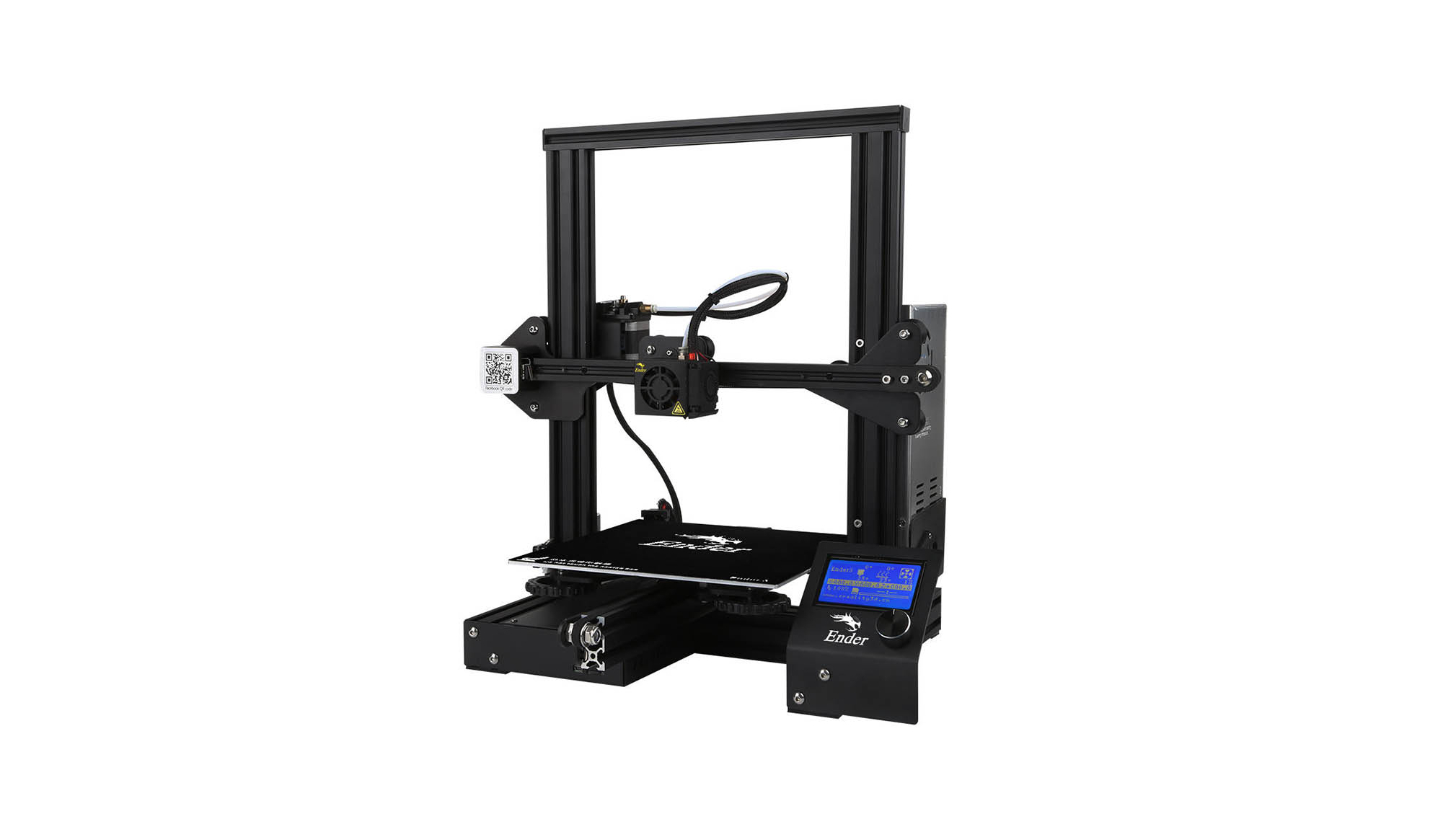Why you can trust TechRadar
Software support
Provided with the printer is slicing application Cura 3.0.2, but you can get a more current version – Cura 3.4.1 – as a free download online. This software can interface with the Ender 3 via USB, or be used to output G-code to the microSD card for printing without a computer.
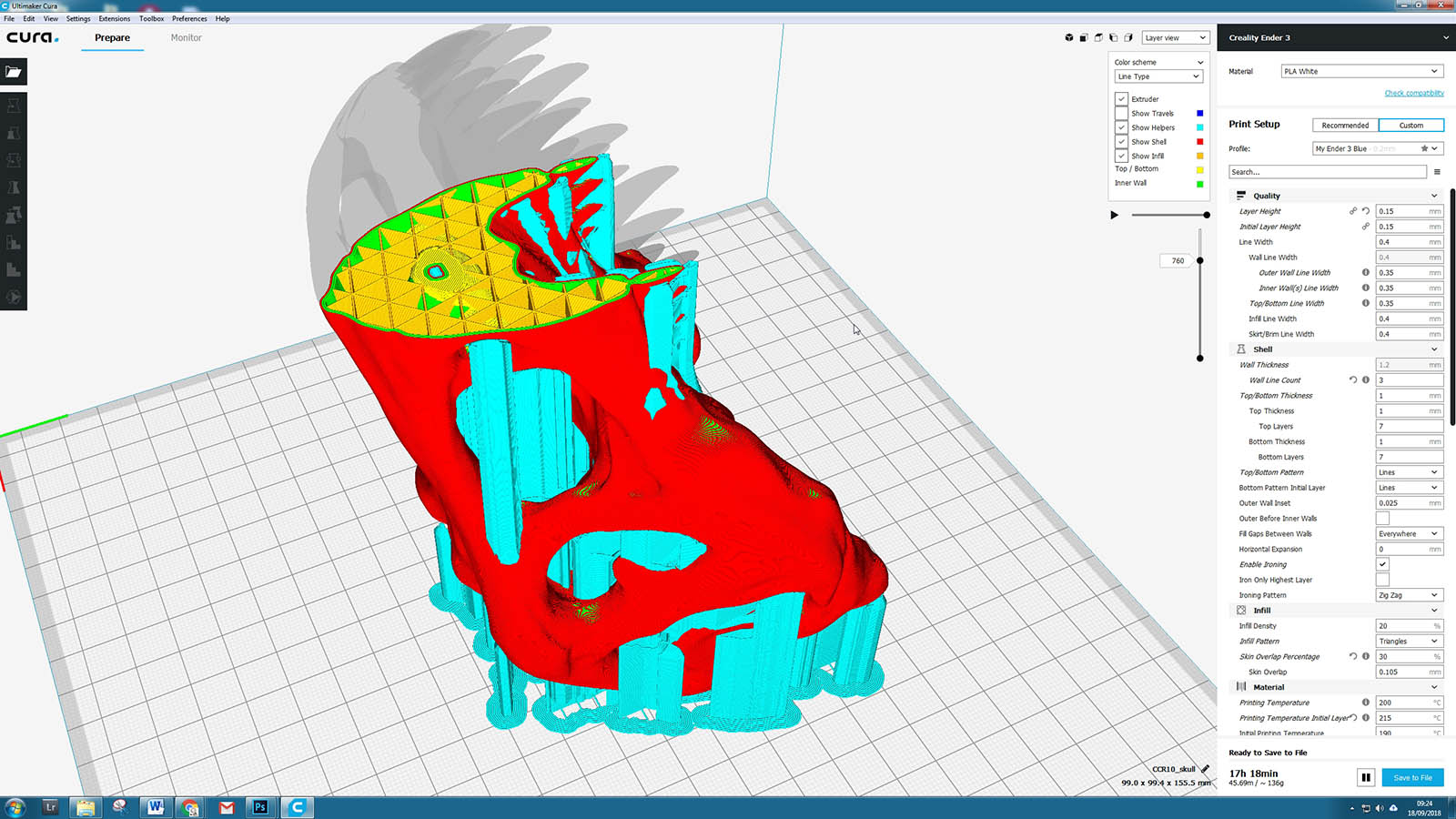
Printing from the PC does have the advantage that you can send extra G-code and monitor temperatures from there, but the machine can’t enter sleep mode for the entire print sequence.
For those who want the ultimate configuration, a Raspberry Pi Model 3+ with OctoPrint can connect via the USB port instead of a PC. The Pi can drive the printer, and be accessible over Wi-Fi for control and progress information. Plus you can even hook up a USB camera to give you enough visual feedback to abort any failure before things get super-messy.
There are other slicers available, and once you’ve created a printer profile for the Ender 3, it should work as intended.
The fact that there isn’t a default profile in Cura is understandable, given that it was created by another 3D printer maker, Ultimaker.
If you want to design models yourself, there’s a selection of free tools for you to download or use online. We experimented with Sketchup, Autodesk Meshmixer and Fusion 360 (trial version) to create models and then output them in the STL format that Cura can accept for G-code creation.
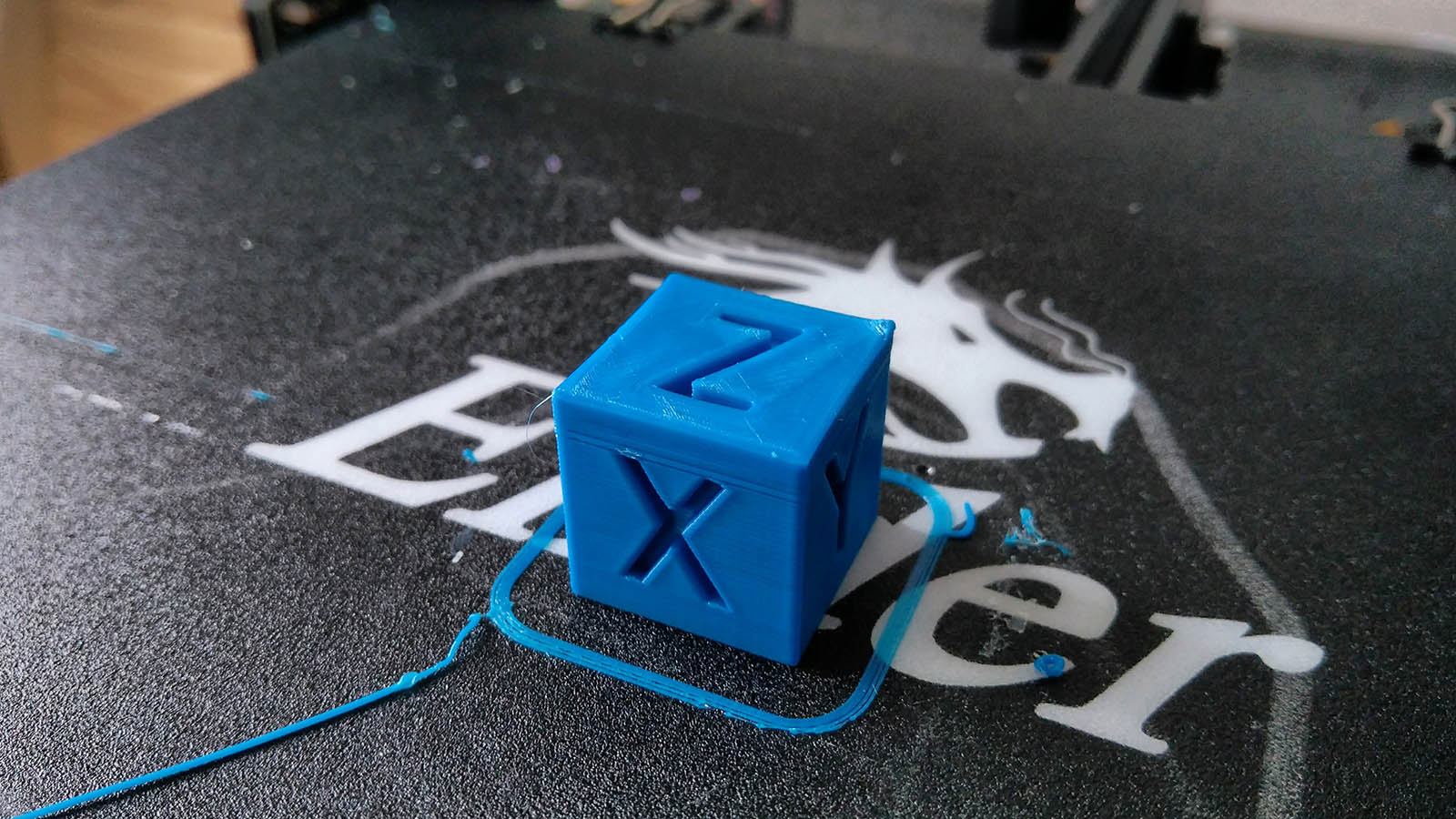
Performance
The speed of printing anything in 3D is dictated by the settings used, and that in turn directly impacts on the quality of the output.
Using a draft 0.2mm layer height profile that we created for the Ultimaker Cura with a print speed of 50 mm/s, the results we got were excellent.
Our XYZ 20mm test cube test took 42 minutes, and it was within 1% dimensional accuracy in all directions. That suggests that with minor tweaks you could make connecting objects within very workable tolerances using this printer.
Compared with other 3D printers around this price point, or even ones costing double this, that’s ‘fast’ – and the quality demonstrated is exceptional.
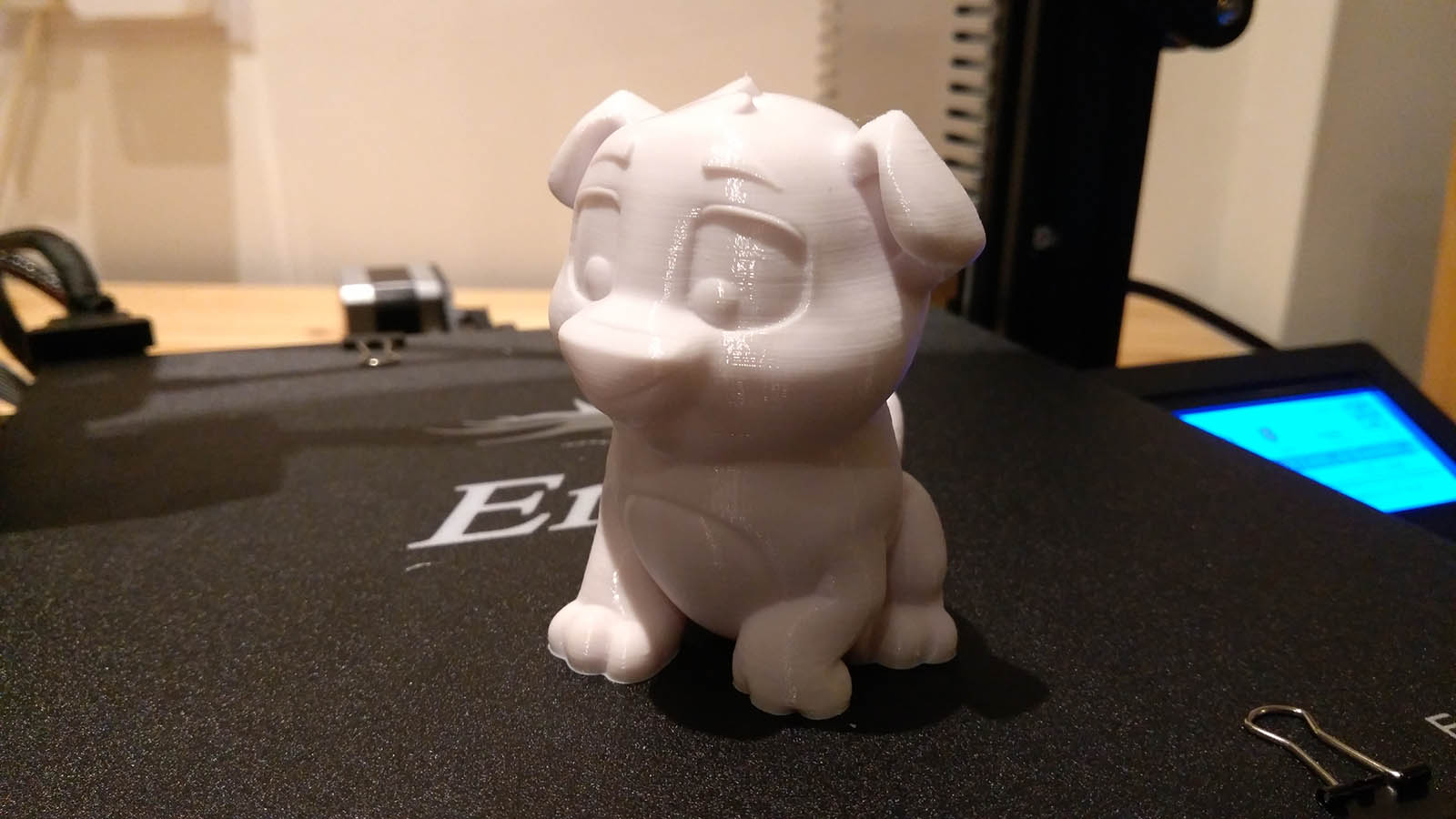
The G-code Dog included with the machine takes a whopping 5 hours 30 minutes to print, as it uses an especially slow print speed and layer height to show off the very best quality that the Ender 3 can achieve.
The 3DBenchy boat, a staple of the 3D printing world, took less than two hours with a 0.2mm layer height and no supports, and came off the bed almost perfect.
There are faster machines out there and even a few cheaper ones, but at this price, the Ender 3 has few, if any, serious competitors.
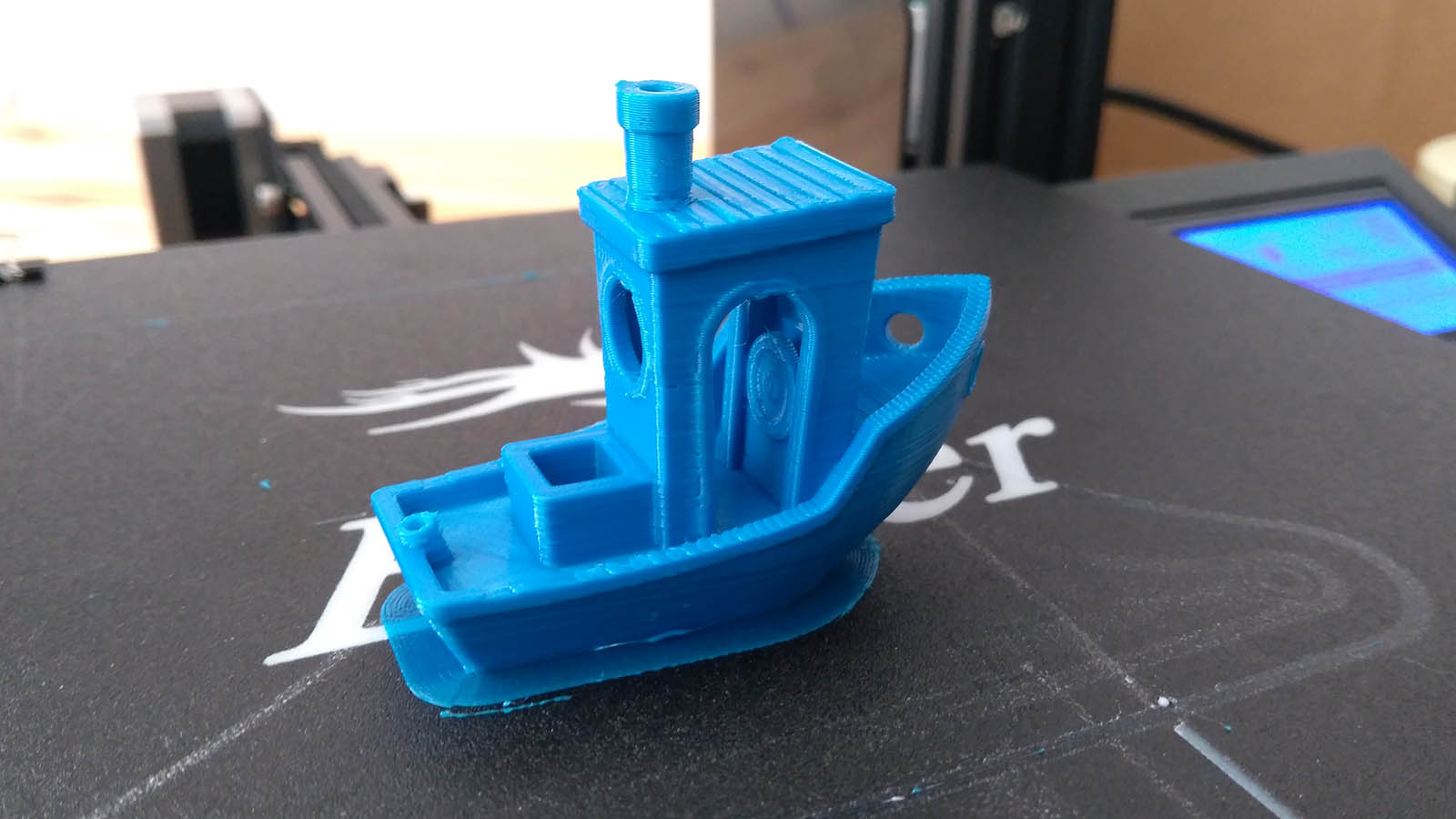
Running costs
How long is a piece of filament? The cost of PLA 1.75mm filament varies wildly, as does the quality of the product. You can pay anything from £10 ($13) to £30 ($49) for a 1kg reel of filament. Metallic, carbon fiber and wood particle infused PLA costs the most, should you fancy something exotic.
Helpfully, most slicers will approximate the weight of any object you print, and adjusting the level of infill could reduce filament use significantly.
As a general guide, the demo dog weighs just 35g, or roughly 33p (40 cents). That isn’t very cheap, but it is hardly expensive either.
A 1kg reel can make a large object or lots of smaller ones, and it is nice to have a selection of bright colors on hand. Based on our usage, we’d buy at least a couple of reels initially and add more different colors when you need them.
PET-G is more expensive, and indeed at least double the cost of the cheapest PLA. Although for those that need a small heat resistant part making, you can get small 250g or 500g reels of the stuff.
How much you end up spending on filament will be dictated by how addicted you become to 3D printing, and with a machine like the Creality Ender 3 around, we’d say that’s almost a certainty.
Final verdict
This is nothing short of a simply amazing device. The Creality Ender 3 makes high-quality 3D printing affordable in a way that it wasn’t just a year ago. 3D printing is still a steep learning curve to climb, but the latest Ender 3 is an excellent base camp from which you can start out on that adventure.
- Take a look at the best 3D printers of 2018
Mark is an expert on 3D printers, drones and phones. He also covers storage, including SSDs, NAS drives and portable hard drives. He started writing in 1986 and has contributed to MicroMart, PC Format, 3D World, among others.
